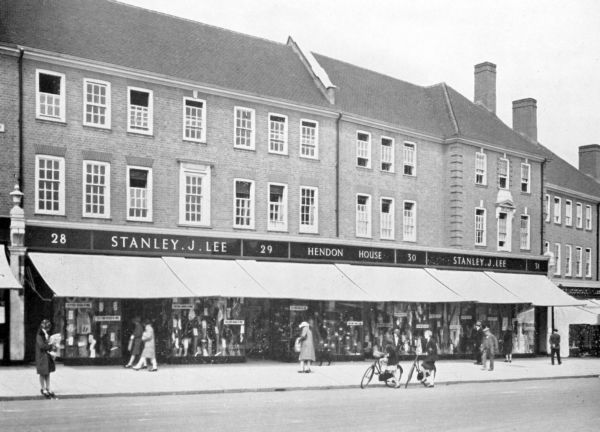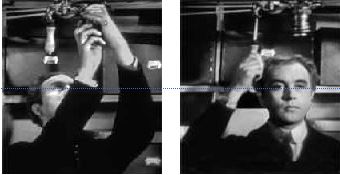
Department stores in 1940s and 50s UK
Merchandise
The only department store in Edgware was Stanley J Lee which was owned by the Lee family and, as far as I know, had no branches anywhere but Edgware. The people of Edgware seemed rather proud that their town boasted a department store. So it could not have been common.
There was though a really large Co-op department store in the next town. It always looked rather shabby, but it had a wider range of goods than our local one. It sold up in the late 1940s or 1950s and, as far as I know, no Co-op department stores ever reopened.
Our local department store, Lees as it was called, was on two sites in Station Road: one sold haberdashery, fabrics, underwear, etc, which is the one in the photograph and the other, which is lower down the hill sold clothes.

The Edgware department store, Stanley J Lee. Photograph courtesy of Tony Woods.
There is photograph of the shop on an Edgware page showing its position in relation to the other shops along Station Road.
The flying fox for managing customers' payments
What I remember particularly about department stores and other large shops like Sainsbury's was how the customers paid. The sales assistant sent each bill and the customer's money in a screw-top canister along a cable above our heads to a central till. Then the cashier sent back the change and receipt in the same way. I understand that the device was called a flying fox.
Every counter in the department store had its own flying fox which meant that there was a canopy of cables overhead.
The canisters moved quite fast along the cables and jarred when they came to a stop at the counters and the cashier. I suppose the staff got used to the noise.
The flying fox system meant quite a delay for the paying customer, but presumably the stores regarded it as safer from theft as only the cashier had a till. Cheques, incidentally were very rare. By no means all households had bank accounts, and shop keepers were loathe to accept cheques from people they didn't know, there being no way of checking whether they had the funds to cover the purchase.

Flying fox customer payment system
A sales assistant putting the customer's money into the flying fox canister and pulling a release mechanism to send it 'flying' along a cable to the cashier. Screen shot from an old film.
The flying fox system in the Birmingham area
The brass chain pulley money systems for paying were in all the Co-op shops around us in the Birmingham area, but I don't remember if being called flying fox.
Marilyn Ormson
If you can add anything to this page or provide a photo, I would be pleased if you would contact me.
Text and images are copyright
sources: early 20th century material
sources: ww2 home front and other material
contact
the webmaster/author/researcher/editor
privacy policy
















